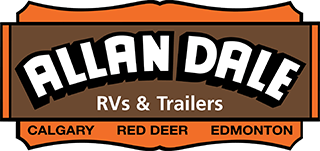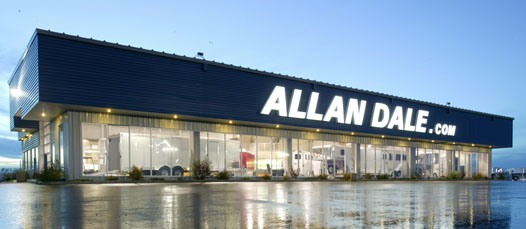Trailering & Towing your Boat
Not everyone has the luxury of living right on the water. Most of us have to transport our boats via land routes in order to enjoy a relaxing day on the water and that means towing a trailer that’s holding your boat. Some boats come with their own trailers as an optional features while others might require a special, third-party purchase, but it’s not really feasible to own a boat and not own a boat trailer.
This means you’ll need to learn how to use your trailer so you arrive at your destination safely and efficiently. Allan Dale Trailers & RVs has provided some tips for this to help get you started, but if you need more advice, stop by one of our locations in Edmonton and Red Deer, Alberta and let us know how we can help you!
Follow Government Weight Restrictions
When you’re working with smaller boats, weight may not be a big concern for you, but as the boats get bigger and bigger, it needs to be a priority. There are a few reasons for this: firstly, if any part of your towing unit is overwhelmed by weight it’s not equipped to handle--tow vehicle, trailer, and even hitch--it creates a big safety hazard for you and other commuters on the road. Secondly, it can seriously hurt the efficiency of your vehicle by guzzling up gas unnecessarily and wearing down the parts faster. And finally, it’s the law. If you’re caught red-handed with an overloaded unit, you can be looking at some serious fines.
 To know the limits of your tow vehicle, figure out the gross combined weight rating (GCWR). This is the maximum amount of weight your entire unit can handle--tow vehicle plus towed units plus cargo and passengers--as assigned by the tow vehicle manufacturer. If there’s any risk your boat and trailer could push these limits past their breaking point, you’ll want to look into alternative options.
To know the limits of your tow vehicle, figure out the gross combined weight rating (GCWR). This is the maximum amount of weight your entire unit can handle--tow vehicle plus towed units plus cargo and passengers--as assigned by the tow vehicle manufacturer. If there’s any risk your boat and trailer could push these limits past their breaking point, you’ll want to look into alternative options.
Hitching and Safety Check
Once you have the right tow vehicle, it’s time to hitch. Set the ball joint lower than the hitch and back up the tow vehicle until the ball joint and the hitch are right on top of each other. Lower the hitch until the two parts lock into place. Set the pin and all the safety chains, as well as any electrical connections that need to be made. Once everything is connected, take one final look at all parts to ensure that everything is secure and won’t give you a heart attack on the road. If you need to, take the unit for a short drive around the block to make sure the hitch is set.
Safe Driving with a Trailer
Now comes the hard part: actually hauling the trailer and the boat down the road. This is going to take time, patience, and practice. Don’t make your first trailering experience a day when you have somewhere to be. Spend plenty of time practicing behind the wheel, well before you take your boat out for its maiden voyage. This is going to require relearning some basic driving skills, including reversing, parking, turning, and braking. We recommend finding a large, empty parking lot where you’re free to make as many mistakes as you need. Also, find a low-traffic time of day to practice highway skills like high-speed driving and merging.
With the right kind of prep and strategy, getting your boat to the water will become easier and easier. And then all you’ll have to do is figure out which fun activities you’ll want to do while you’re soaking up the waves. If you still need the right boat to enjoy your nearest waterway, then stop by Allan Dale Trailers & RVs. We’ll show you the models we have available for patrons in Edmonton and Red Deer, AB.


